Lisa Niver's Blog: We Said Go Travel, page 436
December 28, 2013
Vassilitsi, Greece: The time of peace and joy
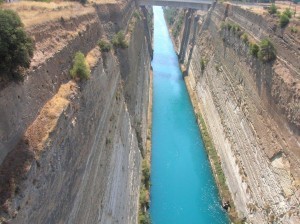 A couple of years have passed already since we travelled to Greece to spend our best holidays ever.
A couple of years have passed already since we travelled to Greece to spend our best holidays ever.
We, my husband, our two girls and me, had taken a flight from Vienna to Athens. We now live in Australia and Europe is way more distant now.
After we had arrived in Athens we had hired a car in direction to Peloponnese. We stopped for a night in Loutraki as our plane had arrived at Athens at night. Loutraki is a seaside resort on the Gulf of Corinth about 65 kilometres west form Athens. We also went to see the Gulf of Corinth and felt very small in relation to this impressing channel. I have never seen something like this before and it was also very interesting to know more about the history when it was constructed.
After a couple of hours drive we finally arrived at Vassilitsi, a small village in Koroni in Messinia in the Peloponnese’s Region of Greece. We had booked a holiday house for 10 days. The house was like a dream came through. We had a fantastic view to the ocean and a terrace around the whole house. When I first saw the garden my attention was immediately caught by all those wonderful fig trees with hundreds of ripe figs waiting to be picked, what I did every morning. If everyone knows the feeling of eating a ripe fig with all the fullness and flavour just stay with me. I can still sense it. There were olive trees as well, as typical for Greece.
Besides enjoying the wonderful view to the ocean we could go for a little walk until we came to a small trail where we could climb down and arrived at a small but peaceful beach. Although the beach was accessible by car as well it was never crowded or noisy. Right at the end of this peaceful beach there was a small alcove. This was a perfect place for finding shade and protection against the sun and to have some quiet time as well.
I still remember that this was the place where I could really relax which I had not been able for ages. I think it was the combination of the fantastic turquoise blue water, paired with the sun reflecting in the waves, the time to read books and on the other hand enjoy being with my family, having fun whilst swimming, snorkelling or playing games on the beach. I had the impression as if time was endless and therefore so precious. On the other hand we had plenty of possibilities to discover the surrounding area and visited historic places such as Olympia. Given that it was pretty hot at this time as it was during August.
All of us have been Greece fans and therefore we really enjoyed going out for dinner as we love to eat Greek food. It was very nice to find some restaurants in Vassilitsi where a lot of Greek people went to eat as well. The food was beautiful and rich and we enjoyed sitting outside until late night. We had the impression that it was less touristic and felt very authentic.
As I mentioned at the beginning already many moons have passed since we had this family holidays and I still have got all those wonderful memories and impressions I collected during this time. Whenever I feel down or under too much stress I recall these memories and immediately my face changes and I start smiling and feel like a wave of life-force and happiness is flowing through my body.
About the Author: Barbara Wallner: English is not my first language and I do hope that my translation still captures how beautiful this vacation was.
Thank you for reading and commenting. Please enter our next Travel Writing competition and tell your story.
The post Vassilitsi, Greece: The time of peace and joy appeared first on We Said Go Travel.
France: Below the Surface of the Seine
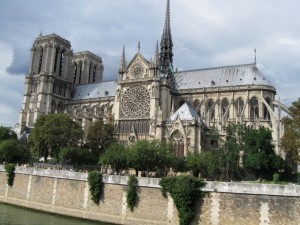 The river Seine hides behind the next cobbled corner, only a minute’s stroll from the Right Bank atelier apartment where I am staying, off Rue de l’Hotel de Ville in Marais, Paris. The murky Seine is ever present, snaking its way rapidly around the Île Saint Louis and Île de la Cité, carrying centuries of memories, as once it carried the bodies of slain Celts, unwelcome Algerians and Protestant refugees. A tragic irony becomes apparent in the name seine; an Old French word that means ‘fishing net’, when one learns of how often it has hauled in slaughtered bodies over the centuries.
The river Seine hides behind the next cobbled corner, only a minute’s stroll from the Right Bank atelier apartment where I am staying, off Rue de l’Hotel de Ville in Marais, Paris. The murky Seine is ever present, snaking its way rapidly around the Île Saint Louis and Île de la Cité, carrying centuries of memories, as once it carried the bodies of slain Celts, unwelcome Algerians and Protestant refugees. A tragic irony becomes apparent in the name seine; an Old French word that means ‘fishing net’, when one learns of how often it has hauled in slaughtered bodies over the centuries.
I am staying with my boyfriend, a fellow-Australian writer, in the Cité International des Arts, in Marais, a complex of 300 studios, occupied by artists from 37 different countries. As with all of France, the Cité des Arts has a layered history, growing from the inspiration of one man – Felix Brunau – Inspector-General of Public Buildings and National Palaces, who convinced the French Government in 1947 that there was an urgent need to assist foreign artists in the post-war period of reconstruction.
As I cross the Pont Marie onto Île Saint-Louis in dusk – one of many bridges that links the Right Bank to the Left Bank – I look across to Notre Dame Cathedral to my right and observe the illuminated river ferries carrying tourists dining on board, sipping wine, oblivious to the dark past that probably produced that vintage. Their blurry gaze would barely register the Left Bank where vineyards once flourished in the thirteenth century on what is now the rue Galande, extending to rue Saint-André-des-Arts. Ahead of them, the Pont St Louis and Pont de Archèveché lead onto the Île de la Cite where the ferry will in a few minutes pass the Notre Dame Cathedral, where the 1499 floods washed away a bridge. The volume of river traffic, including wine merchants, and the dense population meant that all bridges had to be secured by chains. If this were the early eighteenth century, I would be looking down from the bridge onto flettes – the small boats that transported wine and grain into the city, their captains fearful of hustlers and thieves.
Who could believe that this now illuminated, romantic area of Paris – where lovers attach lockets to the Pont Louis-Philippe with inscribed messages of betrothal, and brides with grooms pose for photographers – was once the haven of dysentry and typhus imported from small hamlets along the Seine or resulting from its use as a sewer, and where love was replaced by commercial sex offered in taverns, often leading to syphilis.
Betrothal was not always a matter of choice in Paris. Ahead lies Notre Dame square, where in the sixteenth century, Catherine de Médicis had strategically arranged a politically advantageous French marriage between Marguerite de Valois, a Catholic, and Henri de Nevarre, a Protestant aristocrat. This was the trigger for the Bartholemew Day Massacre.
As I look down into the grey-green waters that rush with urgency into the future, I imagine the Seine running red with Protestant blood as it did on 24th August, 1572. Within days of the marriage, the Seine was to be the watery grave for thousands of wedding guests, victims of the frenzy that overtook the Cite. The streets became a battlefield where now stands the Louvre and the Latin Quarter, and the Seine was swollen with bodies that floated back onto the banks. The massacre soon spread into towns, with Lyon having 2,000 Protestants killed in one day. Now the river reflects only the grey, darkening night and the city lights.
Light rain begins to fall as I return towards the Cité des Arts apartment. A chilly breeze brushes raindrops on my face, so I pull up my jacket hood and ruffle my woollen scarf higher around my neck. Piano accordion music greets me as I approach a busking troop of performers, unperturbed by rain in the dark of night. I stop to photograph them, surprised by their lyrical refrain that summons up the spirit of Paris. Such is the contradictory nature of this contemporary city. Dark and light constantly mingle.
As I open the heavy iron gates to the Cité des Arts courtyard, the lyrical mood of the performers lingers, and I feel happy about the present, grateful for the opportunity to distill into words the impressions I have gained from my stay, in awe of the tumultuous history with its bloody events, all washed away in the river Seine, leaving behind this present grandeur. Grateful also to Felix Brunau, and his inspired entrepreneurial spirit that has allowed me and my partner to have the opportunity to write in Paris, aware that the past is ever present in this moment.
About the Author: Kathie Ashton is an Australian writer and visual artist. Currently, she is staying in Paris in the Cité International des Arts with her playwright partner, whose plays are produced in Europe. She is currently working on writing and illustrating a children’s book to coincide with a Paris production of a play for children.
Thank you for reading and commenting. Please enter our next Travel Writing competition and tell your story.
The post France: Below the Surface of the Seine appeared first on We Said Go Travel.
HuffPost: Do Good Teachers and Travelers need Secure Attachment?
 After reading Confessions of a Bad Teacher, I wrote an article called “Why So Many of America’s Teachers Are Leaving the Profession,” which had received over 1450 likes and over 50 comments in the HuffPost50. My next article in HuffPost Education was called Secure Attachment: Do Good Teachers Need It? about the same book and Matthew Hertenstein’s The Tell.
After reading Confessions of a Bad Teacher, I wrote an article called “Why So Many of America’s Teachers Are Leaving the Profession,” which had received over 1450 likes and over 50 comments in the HuffPost50. My next article in HuffPost Education was called Secure Attachment: Do Good Teachers Need It? about the same book and Matthew Hertenstein’s The Tell.
As my third period students filed in the door for physics class, one of the 8th graders whispered to me, “They did it again. Ms. Morgan (name changed) cried in class.” I wondered what happened this time. Ms. Morgan and I were both new teachers at the public middle school and shared nearly all the same 150 students who appeared 36 or so at a time in our classrooms. While I was older than her, we were both teaching in public middle school for the first time. How did a small group of students know what to do to crush Ms. Morgan and bring her repeatedly to tears? Why did they “go after” her repeatedly and why did a small math mistake ruin her whole day?
While reading Matthew Hertenstein’s The Tell ”about the power of prediction based on observations of brief samples of others’ behavior,” I was thinking about teachers and classroom management. Some teachers can control a class of students and some cannot. Children seem to be able to size up teachers in an instant, just as adults can sense from laboratory studies and photos who is more aggressive, what is someone’s sexual orientation and other personal things in mere moments. Learning teacher’s tells could help them to do better in classroom evaluations from supervisors but could it also help with management?
READ THE FULL ARTICLE on the Huffington Post Education section.
Comment below about what you think about Teachers and Travelers and secure attachment!
The post HuffPost: Do Good Teachers and Travelers need Secure Attachment? appeared first on We Said Go Travel.
Australia: The Second Shade of Blue
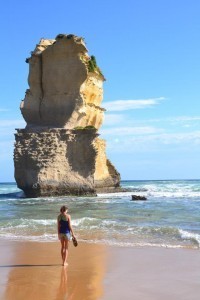 I’ve never seen anything so blue.
I’ve never seen anything so blue.
The azure ocean stretched into an endless sky that filled my overwhelmed eyes. I soaked in the salty air, letting the breeze comb through my auburn hair as it murmured to me.
The Twelve Apostles stuck out in random chunks across the shallow ocean floor. The majestic rock formations were formed by harsh weather conditions and bizarre erosion. The apostles were once arches that had slowly collapsed, leaving limestone stacks up to 45 metres high. I scanned the horizon for twelve figures, but only counted nine.
The sculptures looked awkward, towering above the flat level of the water so close to shore. Rather than forming perfect cylinders, they twisted with random curves and chips from a lifetime of being subject to torturous conditions. Green growths extruded from their tops, fed by rare raindrops and the salty ocean spray.
The apostles were an imperfect orange-beige colour. They were fat and stocky; bizarre and beautiful. They looked like upside down ice cream cones, thrown down and discarded in a temper tantrum by an omniscient God.
The sight of these gigantic rocks was astounding and awing and slightly off-putting, hence their popularity. The wooden viewing platform buckled beneath the weight of a mass of pedestrians. Thin protruding beams supported swarms of tourists that snapped black cameras, preserving the scene as though it were about to fade away.
I stood beside an explicit warning sign that screamed CAUTION—YOU MAY FALL AND DIE. Ignoring the exaggerated advertisement, I leaned my body over the railing, my long hair cascading over the edge like a waterfall. I squinted at the golden sand below. The faint imprint of footprints materialized in my strained eyes. I glanced around for a way down to the beach, but the only apparent option was jumping, and I wasn’t quite ready to FALL AND DIE.
“Alison, we need to keep driving.”
I felt Ryan’s warm body behind me. I fell from the turquoise water into his navy eyes without question. I was 18, naive, and more in love with him than I was with the world.
Little did I know.
Our black rental car sped down the highway. We had only been driving for ten minutes when I needed to stop again.
“Pull over,” I groaned, clutching my irritated stomach in agony.
Ryan navigated the car into an abandoned parking lot. I threw open the passenger door and gulped down fresh air. My stomach was instantly soothed. Ryan jumped out to stretch his long legs in the yellow sun.
We wandered to the edge of the cannon, where the land stopped and dropped straight down to the ocean. My stomach plummeted to my bowels as I peered over the edge. This time, nausea came with a rush of excitement.
A small forgotten staircase clung to the side of the steep decline. It was a secret passage that led to the exact beach we had admired from afar only moments ago. Speechless, I took the warped wooden steps two at a time, nearly falling through the rotten, decayed planks as I ran.
I sprinted straight into the ocean, kicking off my sandals before I reached the lapping waves. The white froth licked my toes. Ice cold shivers ripped through my body. I shrieked at the sensation.
The sheer volume of the streaked rocks, open ocean, silken sand, and brilliant sky was incredibly daunting. I was a blurry dot in the tourists’ curious camera lens, an insignificant footprint on the sand, a pin-prick on the map. I was awe-struck by the realisation that the world is so big, and I am so small.
I closed my eyes, soaking up the sunshine. My cheeks hurt from smiling.
“Alison,” Ryan murmured, snaking his strong arms around my waist. “Let’s go.”
I pulled away from him in surprise. “No,” I whispered, “Let’s stay.”
“It’s a long drive back,” he said, nodding towards the staircase that beckoned our return, the secret passageway that had taken us to paradise, the wardrobe to our Narnia.
I stared into his shaded blue eyes, the first wisp of maturity and independence seeping into my skin. I curled my toes in the soft sand, rooting myself to the spot. My eyes drowned in the ocean as he pulled me away, leaving my heart with the sand and the sky.
And then, like all travelers do, we left.
About the Author: Alison Karlene Hodgins is an award-winning travel writer, newspaper columnist, and writing & publishing student currently residing in Kelowna, BC, Canada. When she’s not boarding international airplanes or feverishly hunting for the best hostel, Alison can be found braiding hemp bracelets, editing her debut travel novel, and drinking copious amounts of tea. Find her on Twitter @AlisonKarlene, on Facebook at Alison’s Adventures, and on her travel blog.
Thank you for reading and commenting. Please enter our next Travel Writing competition and tell your story.
The post Australia: The Second Shade of Blue appeared first on We Said Go Travel.
December 27, 2013
Alight in Thailand
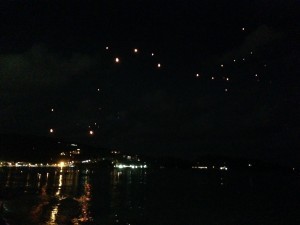 Silly, I know, but in the midst of my Thailand dream vacation – I felt trapped. After a single night in the bustling epicenter of Bangkok and a plane ride that left me feverish and exhausted in Phuket, I wanted a little peace and quiet a lá those glossy travel magazine covers featuring a single beach chair planted in the sun-warmed sand, facing the seam where the sky kisses the water at the horizon. Instead of relaxing, my first 24 vacation hours consisted of obsessively rehearsing warnings from caring friends about local scamming techniques and identifying them: the taxi driver who drove around in circles to raise the fare, the bartender who claimed she received a $500 instead of $1000, and even the sweet-looking lady at the fruit stand who purportedly charged everyone 25 baht per rhambutan. During that first day I only became steadily more paranoid and miserable.
Silly, I know, but in the midst of my Thailand dream vacation – I felt trapped. After a single night in the bustling epicenter of Bangkok and a plane ride that left me feverish and exhausted in Phuket, I wanted a little peace and quiet a lá those glossy travel magazine covers featuring a single beach chair planted in the sun-warmed sand, facing the seam where the sky kisses the water at the horizon. Instead of relaxing, my first 24 vacation hours consisted of obsessively rehearsing warnings from caring friends about local scamming techniques and identifying them: the taxi driver who drove around in circles to raise the fare, the bartender who claimed she received a $500 instead of $1000, and even the sweet-looking lady at the fruit stand who purportedly charged everyone 25 baht per rhambutan. During that first day I only became steadily more paranoid and miserable.
I often felt like a fish swimming upstream with bodies pressing against me on all sides. I became overwhelmed by my thoughts combined with the sensory input zooming towards my brain via my every neuron– pungent smells of people mixed with the heat spiraling up to my face from skewers sizzling on grills, bodies brushing past (a reminder to loop my hand through the purse strap that was already secured around my shoulder), obsidian scorpions waiting to be eaten on shiny platters, and vendors peddling various wares with shouts of “[Object], [X amount of baht], You! Come Here!” My brain switched to survival mode, moving my thought function down towards the brain stem, amping up my epinephrine level so that I could flee the city and seek refuge on the beach with celebrations of Loi Krathong and Yi Peng. After I bought a round krathong with folded banana leaves and stunningly blue orchids, I felt like Indiana Jones with my treasure in hand, plotting an escape; my escape route included lots of instantaneous weaving, but I dodged all obstacles such as rampant charging mopeds and the slanted water drains that could easily twist an ankle.
When my friend and I emerged from the throngs of people at the beach entrance, the world changed. We veered beyond the restaurants with Lady Gaga blasting on overlarge speakers towards the bottom of the beach where the waves crashed into shore bringing in flowery debris and tumbling sand and tiny butterfly coquina shells back out to sea. Wonder crept back into my being as I spotted a girl no older than seven delicately scooping sand into mounds and solemnly rearranging the candles of her mini shrine. My faith in humanity was restored when a group of locals helped to light my krathong with a Zippo and wished me luck as I clutched my skirt in hand and waded out into the sea, sending away my troubles on the beautiful float while thanking Mother Earth for her liquid bounty. I enjoyed the camaraderie amongst strangers as chatter of all different languages bubbled up as we all helped to ensure that each lantern would reach its destination, gently wafting into the sky. Like any sentient being I winced when a burning lantern came close to my face, but I sincerely delighted in the joyful laughing that ensued as a rogue lantern took a dive into the crowd. The hope and solidarity were tangible.
We bought a few traditional lanterns, white cylinders, and stood across from each other holding the edges of the lantern as it began to fill with hot air from the flame at the base of the balloon. The warmth at the tips of our fingers grew until we simultaneously raised our outstretched arms skyward, and we were congratulated with the sight of our lantern effortlessly rising, catching the breeze and following other lanterns on the same air current, joining the caravan of dreams. The lanterns made a staircase to the stars, drifting upwards to greet the sumptuous full moon and ascending to graze the heavens.
The vastness of the sky and shoreline were humbling, sheltering hundreds of people gathered to bear witness to the light puncturing the darkness: dotting the ocean, emanating from the faraway city, spreading across the sky in lanterns with the stars merrily twinkling and presiding overall. My friend and I wandered towards the far side of the beach where all the sounds became hushed in wake of the waves. A special red heart lantern was set adrift and drizzled down fireworks, a glittery trail of silver and gold that sparkled down into the boundless body of water below. In the unobtrusive shared solitude with my friend I felt refreshed, completely overtaken by a sense of awe as I hugged my arms around my knees while the waves crept ever closer during those minutes that stretched into eternity.
My restless soul alighted.
About the Author: Alison Roberts frequently penned stories in her formative years, developed a passion for creative non-fiction in high school, tinkered around in the Communication Arts department, and graduated from the University of Wisconsin – Madison in 2012. Ms. Roberts did not jump on the bandwagon to grab a 9 – 5 job; instead she is on scholarship studying Mandarin in Taiwan. When she is not in class, she is generally happier because she gets to galavant around Asia, synthesizing her experience through essays that are occasionally snarky, occasionally philosophical and much more sincere than she can verbally convey.
Thank you for reading and commenting. Please enter our next Travel Writing competition and tell your story.
The post Alight in Thailand appeared first on We Said Go Travel.
Peru: Feet of Strength
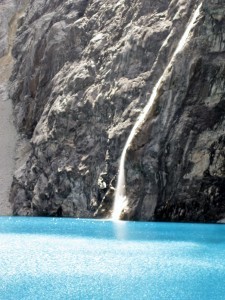 My leaden legs plod beneath me. They scream for rest but my mind is resolved to keep moving. I fear that if I stop I may collapse irrecoverably. It feels as though someone has placed a boulder inside my backpack and my body is strangely sluggish. I have only trudged this path for a few hours, but I feel stuck inside a space warp, where my destination always eludes me.
My leaden legs plod beneath me. They scream for rest but my mind is resolved to keep moving. I fear that if I stop I may collapse irrecoverably. It feels as though someone has placed a boulder inside my backpack and my body is strangely sluggish. I have only trudged this path for a few hours, but I feel stuck inside a space warp, where my destination always eludes me.
But I focus most of all on my slow breathing, a rattling intake of breath followed by a pathetic exhalation. Oxygen is a shy companion at 4,560 metres.
I’ve made it to the final incline, to a plateau positioned between two mountainsides that are part of Peru’s Andean cordillera. I ascend a dizzying series of switchbacks, thinking only about the reward of lying down at the end – bother the view. My feet are automatons, powered solely by mind-work and the determination that I simply have to reach the top.
I have companions front and back and as we surmount the final peak, we pause to reclaim our breath. A tremendous rumble makes the mountains around us tremble. We start forward again.
We are in a landscape of grey hues. The chalky path crunches beneath our tired feet. Granite boulders scatter the mountainsides which press in close around us. Spotted here and there are purple-grey butterfly tarwi flowers, and beyond is a crumbling grey cliff.
Above the cliff is an ice wall – the peak of Mt Chacraraju sitting majestically at 6,108 metres, but it too appears to be burdened by gravity, and every so often it emits sonorous cracks, murmurs, and rumblings as the ice shifts.
Then, in the midst of this monochromatic scene, we spy an incongruous speck of shimmering topaz blue. It glimmers, beckoning us forward, and we follow it mesmerised. Suddenly the aching in our limbs is forgotten, the boulder has vanished from my backpack, and my lungs have adapted to the thin air. My pain is inconsequential as long as that tantalising blue dot remains in my sight. My legs are shaky from overuse, but they are compelled forward by the promise of the expanding view of Laguna 69.
Soon I am touching the icy water of a lake like no other. Our surroundings remain monotone (an eroding cliff of dust and, higher up, ice) but it only serves to highlight the teal dazzle of the lagoon below. A thin white waterfall plummets from the heavens. Purple-grey-yellow tarwi flowers adorn the lakeshore where we sit to feast on pre-packed sandwiches. We say nothing. Amid such natural grandeur, words seem impure.
My joints groan in protest as I stand up to descend. The path is steep and incredibly slippery. I can’t imagine how I had surmounted this climb only an hour before. From my viewpoint, path snakes through a ravine and along a mountain slope. In the distance it is merely a thin thread worming its way through fields. It is always angled down, which means that in reverse, I had consistently been climbing without rest. Sheer will alone had propelled me forward.
I am not a hiker by nature. I am not attuned to altitude. And my feeble muscles cry in pain at such workouts. As I hike down, I am overwhelmed. The white peaks of the Huascaran mountain range descend to an alpine valley, but it is not the view that overwhelms me. I am awed by my own capabilities and as I descend 600 metres, I foster a newfound sense of empowerment and self-respect that will stay with me long after the view has faded.
About the Author: Amanda Bensted manages A Roamer Therapy, a travel blog that explores what makes travel wonderful, exhilarating, exasperating, and most importantly of all, so addictive. Read more of her stories on her site.
Thank you for reading and commenting. Please enter our next Travel Writing competition and tell your story.
The post Peru: Feet of Strength appeared first on We Said Go Travel.
Spanish Moss and Ghosts: Savannah, Georgia
Savannah, Georgia – picturesque, charming, immersed in history and haunted. A pleasant drive from Atlanta where my daughter, Amy is currently living, it is a place I had always longed to visit. Like many others I was fascinated by the depiction of the elegant and eccentric Savannahians in John Berendt’s 1994 book Midnight in the Garden of Good and Evil.
In September this year Amy and I spent five days in Savannah. We stayed at the delightfully furnished and comfortable Catherine Ward House Inn in the historic Victorian District, close to Forsyth Park.
The locals come out to the many well-tended parks in the cool of the early evening. Under the eerily hanging Spanish moss they walk small well-groomed dogs, jog, throw frisbies, play baseball or just sit conversing on the park benches. We tried to pick which bench in which park the Forrest Gump film character sat on and uttered the famous line, “My mama always said life was like a box of chocolates …”
The Southern courtesy and genteel friendliness of the people are part of Savannah’s charm. “Have a blessed day,” is often said in farewell. One young man, strikingly handsome and garishly tattooed, addressed me in a polite drawl, “Ma’am, you have a very beautiful daughter.” He then inquired of Amy, “Are you happily spoken for?”
One cheerful and pretty woman we met was related by marriage to Jim Williams, the late art dealer of Midnight fame and owner of Mercer House. She said with pride that Jim had done a lot for Savannah through his involvement with the Historic Savannah Foundation.
Mercer-Williams House situated on Monterey Square, was a five minute walk from our accommodation. We stood outside this beautiful red brick mansion late one afternoon under an umbrella as soft rain fell. We contemplated its tragic history: not only the shooting death of Jim Williams’s assistant, Danny, but in 1913 the owner at that time fell from a second floor bannister and died; in 1969 a young boy chasing pigeons plummeted from the roof and was impaled on the iron fence below.
As we gazed at the house a woman came out of the front door – we presumed it was Dorothy, Jim’s sister who now lives there. Tourists can still visit the house but because it is a private residence tours are limited to certain areas. We did not bother. Instead we went to Owens-Thomas House in Abercorn Street.
The tour of this grand house was well worth it. The English Regency architecture is magnificent. There is a surprising indoor bridge on the second floor. Standing in the slave quarters is a sobering experience, although the tour guide pointed out that the slaves were better treated than those on neighbouring plantations and were even sometimes paid for their work!
The Marquis de Lafayette, who had fought alongside George Washington in the American Revolution, stayed in Owens-Thomas House in 1825 and addressed the citizens of Savannah from a cast-iron balcony there.
Southern cuisine is at its best in Savannah – local seafood (shrimp, flounder) grits, fried green tomatoes, collard greens, corn bread, all prepared with style and sophistication.
We ate at the restaurant of the disgraced celebrity chef, Paula Deen. The food was enticing. However we both felt bloated afterwards. I suspect our greed at ordering the delicious banana cream pie and lattes to finish the meal was a mistake.
The Olde Pink House Restaurant was the highlight of our dining experience. Built in 1771, it has a pink stucco exterior and bare wooden floors. In the candlelight we kept glancing at shadowed corners for the presence of ghosts − not malevolent, just mischievous the restaurant staff will tell you.
Savannah has been called the most haunted city in America. We took a ghost tour in a genuine old hearse. Our guide was a witty John Lennon look-alike with frameless spectacles, a pony tail and a good knowledge of local history and hauntings.
The Bonaventure Cemetery on the outskirts of town is a haven of serenity and gothic beauty. Amy and I strolled along the tastefully sign-posted paths between the sepulchers late one afternoon. Apart from a small quietly respectful tour group, we were the only living souls there. We found the grave of Little Gracie, a child who had died in the 1889 yellow fever epidemic. We were almost hoping to see her as others claim to have, playing on the well-tended grass around her tomb.
We sat by the grave of Johnny Mercer, renowned song writer, listening on Amy’s iPhone to the gentle lyrics of Moon River. The Spanish moss draped down from the ancient oaks around us and there was tranquility in the sultry Georgian air.
About the Author: Judith La Porte is a former librarian. She has had four short stories published in Narrator Australia. She is a member of the ACT Writers Centre. Find her on Twitter.
Thank you for reading and commenting. Please enter our next Travel Writing competition and tell your story.
The post Spanish Moss and Ghosts: Savannah, Georgia appeared first on We Said Go Travel.
Hyderabad, India: Caged Delight
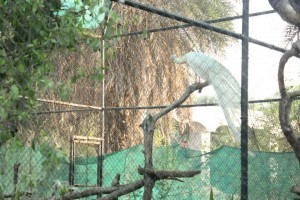 Among the delicate spread of the berry bushes and behind the healthy trunk of a tall banyan tree, she stood, watching. Her eyes, wild like fire, matching the ferocity in her face, glanced at the crowd waiting to see her perform. As she stood up, as majestically as she could and tried to hide her kids behind her powerfully built structure, everyone gasped. And then she roared. People gathered around, their cameras held up to their eyes as they ooh-ed and aah-ed at her golden sheen. But I stood back.
Among the delicate spread of the berry bushes and behind the healthy trunk of a tall banyan tree, she stood, watching. Her eyes, wild like fire, matching the ferocity in her face, glanced at the crowd waiting to see her perform. As she stood up, as majestically as she could and tried to hide her kids behind her powerfully built structure, everyone gasped. And then she roared. People gathered around, their cameras held up to their eyes as they ooh-ed and aah-ed at her golden sheen. But I stood back.
My camera was in my hand, the shutter closed, my face expressionless. As she roared again, I heard everyone cheer. But I couldn’t. They saw her beauty, but I saw her fear. They saw her fiery eyes, but I felt the tears behind them. They enjoyed the entertainment but I suffered in her torture.
Her sheer motherly protective instincts reminded me of my own mother’s.
It may seem weird, my connecting with an animal, but sympathizing is all I can do when I go to the zoo. That’s why I try to avoid it. But my younger sister’s loud laughter and the glitter in my mother’s eyes are the only reasons for my reluctant presence. As always, I stand, rooted to my spot, my heart shattering into a million depressed pieces at the crouching beasts.
A distractingly piercing screech makes me turn and look for the source. At a distance, I see a tiny monkey, its furry, dark skin glistening under the scorching sun. But the scream hasn’t come from it. It has come from a little girl whose hair is now awkwardly caught in the monkey’s hand. She’s shouting and crying hysterically, as the zookeepers rush to her rescue. Taking the animal away, they apologize. I watch as the girl is being pampered. But the monkey is locked up in a basket, unable to get out. It is absurd for me to see that the girl who made a mistake by going too close to the cage is being taken care of, while the poor animal, unable to fight its natural protective instinct, is being punished for being wary.
The other terrible sight I witness is that of the birds. Their cages are more depressing than anything else in the zoo. For a living being that is used to the fresh air, being locked up by all sides must be awful. More snaps and exclamations of wonder. But I stand and watch the sad thing look up longingly at the sky, and I know that it wishes to be among the crows that are free. Its cramped wings flutter helplessly as its head bobs up and down, confused.
I look away.
Standing on the other side of the bars, it’s easy for me to be able to empathise with the creatures but I know that I will never be able to judge the depth of their harried emotions. Life for me, for us, is easier. As darkness looms large upon us, literally, we make our way back to our cars; our footsteps imprinting the sand like the animals have made their mark in my heart. While it saddens me to come here, it also makes me feel thankful. It makes me realize that there is one thing that is very important in this world. Freedom.
As we drive away, the stars appear, lightening the night.
Tomorrow, the sun will come up.
More people will visit the zoo to take photographs, trying to capture the moment.
They will see the greenery, the settings and the animals.
But I will always see the longing in their eyes.
A longing for freedom.
About the Author: Shravya Gunipudi is a 20 year old CA Final Student from Hyderabad, India. Writing has been her passion right from a tender age and she has won numerous contests. She also has a blog titled ‘Fictionally Inkspired‘ – shravyagunipudi.wordpress.com
The post Hyderabad, India: Caged Delight appeared first on We Said Go Travel.
December 26, 2013
Where To Eat in Palau? As seen on Dave’s Travel Corner
Thanks to Dave’s Travel Corner for publishing our article: Quality Dining Palau Style!
Since Jellyfish Lake and the Rock Islands were added to the UNESCO World Heritage list in July 2012, more and more seasoned travelers are choosing Palau as a vacation destination. Recent statistics indicate that nearly 100,000 people visit Palau annually. Holidaymakers who have not yet explored Palau’s charms may be yearning to ascertain if the above water cuisine experience matches Palau’s underwater treasures. During our ten-day stay on Palau, we were treated to a variety of local tastes that we highly recommend to incoming visitors.
Eric Kuo, the owner of Rose Garden Resort, Palau international Tours, and Mingles So Thai restaurant is a wonderful host and creative entrepreneur. At Rose Garden Resort, we enjoyed our room with a view as well as our giant Palau breakfast of eggs, rice and delicious white snapper, truly one of the tastiest fish entrees we’ve ever sampled.
In town, Mingles So Thai employs Thai chefs who serve authentic and delicious Thai cuisine. Having spent over three months in Thailand over the last year, we can vouch for the quality of the food. The whole fresh Unicorn and Parrotfish were beautifully presented and very tasty. The veggie dishes, Penang Tofu and Pad Thai were also excellent.
READ THE FULL ARTICLE to learn about all the great restaurants we visited!
Thank you to the Palau Visitor’s Authority for inviting us to Palau.
Enjoy our many movies from our travels in Palau above and below the water.
Are you ready to experience a waterfall that is on fire? Swim underwater like a kite among sharks?
Palau really is the edge of Paradise! Enjoy all our articles on Palau.
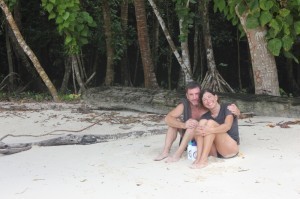
Thanks to Annette for this photo of us from our private island luncheon in Palau!
The post Where To Eat in Palau? As seen on Dave’s Travel Corner appeared first on We Said Go Travel.
Loreto Bay National Marine Park
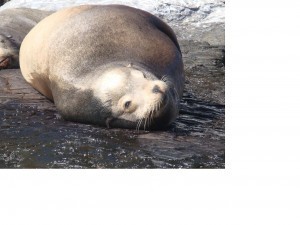 The Sea of Cortez is so large that the conquistador, Hernán Cortez, thought it was the ocean. Sometimes it is sapphire, bluer than the sky and deep, as if penetrating the skin’s surface and merging with the sea in me. Near the shore, the Sea often exposes the rocky beaches it covers like a jade-green slip underneath a woman’s gown.
The Sea of Cortez is so large that the conquistador, Hernán Cortez, thought it was the ocean. Sometimes it is sapphire, bluer than the sky and deep, as if penetrating the skin’s surface and merging with the sea in me. Near the shore, the Sea often exposes the rocky beaches it covers like a jade-green slip underneath a woman’s gown.
But the protected waters of Loreto Bay National Marine Park reveal another curious world to anyone who ventures beneath the surface. The common and beautiful Sergeant Majors with yellow and black vertical stripes swim with and around you in schools if they’ve decided you’re not a threat. A spiny Bullseye Pufferfish moves its body with tiny improbable fins and follows from a distance like a stray dog might. Often the curiosity of a Trumpetfish makes it follow and watch you with its long snout and even longer body suggesting an evolution more like eel than fish. Flat bodies of the Cortez Angelfish move like sails in the water. They parade their unmatched beauty of purple and grey flared with dramatic black, yellow and white stripes as they reveal themselves from an underwater rocky shore.
Much of the sea life is more wary. Triggerfish keep their distance. Their prehistoric top fins stick out of the water like sharks as they chase smaller fish. Parrotfish stay deep and take cautionary interest in humans, though their faces look like an alien relation. A Stingray blends with the sandy sea bottom and shakes its body as it moves away upon any sign of detection. Tiny bright blue fish and others, so brown they are almost black, must sense the destructive potential of the human race as they zip and dash through rocks.
A rocky outcropping is adorned with sea lions bathing their large bodies in the sun. They lounge close to one another, comfortable in sea lion society. Some look innocent, almost childlike, though their huge bodies betray the face. Some look like old men with large foreheads, barking orders and thwarting the very appearance of a threat. All of them have whiskers that shine in the sunlight and frame their faces. Nearby on the water’s surface, giant brown feathers rise from some invisible source. The forms are really the flippers and feet of the lions poking out of the sea as they recline on their backs, bodies submerged.
A suggestion arises from the capitán: do I want to swim with them? I am instructed not to touch them, the rocks where they sit, nor to chase them, per park regulations. Setting aside my fears and a missed opportunity on a previous excursion, this time I jump in. On the shore, their barks seemed to come from some place deep within, now made obvious as I bear witness to one bellowing underwater. I can smell their bodies and watch one lion emit a stream of feces and urine like a leaf blower projecting a straight line of leaves. It is proof of their aliveness as a mammal like me.
I try to be present, enjoying the instant moment. They are strange mammals many times larger and heavier than me. But they are better swimmers than I as they dance and drop. At amazing depths beneath me, they glide like well-made paper airplanes streamlined in the wind. One charges me from behind so I don’t realize it until I turn around to see the rushing lion abruptly change directions within a safe distance and plunge underneath me. I had no time to fear it or react.
In an instant, I realize I am surrounded by lions just by simply being. There is no need to dive or chase after them. When it occurs to me, I count seven around me, a cascade of sea mammals suspended like a curtain falling to unreachable depths. Several are playing with each other, going round and round, then in reverse, their sleek bodies twirling in the water. Some scratch their faces with feet that look like hands. One tilts its head looking at me as it lies on its back. Another lion swims close enough to look at me with eyes big and black as 8-balls. Some dart around and beneath me. Their enormous body strength is magnified by their numbers, but they all look happy, unthreatened.
I stay and watch as long as I dare or can, suspended in water starting to get cold, the warmth of the September Sea only a memory now. I revel in the shared moment as if a part of me is forever tied to the fate of a simple sea lion. For an instant, I am part of all the greatness I observe in the Sea, not separate from it.
About the Author: Leslie Castro is a recovering lawyer and aspiring writer.
The post Loreto Bay National Marine Park appeared first on We Said Go Travel.
We Said Go Travel
We Said Go Travel is a global community of over sixteen hundred writers with articles from every continent.
Stories are shared with photos and video from a perspective of the transformative power of travel. We Said Go Travel has hosted live and online events as well as travel writing contests around the world. ...more
- Lisa Niver's profile
- 57 followers




